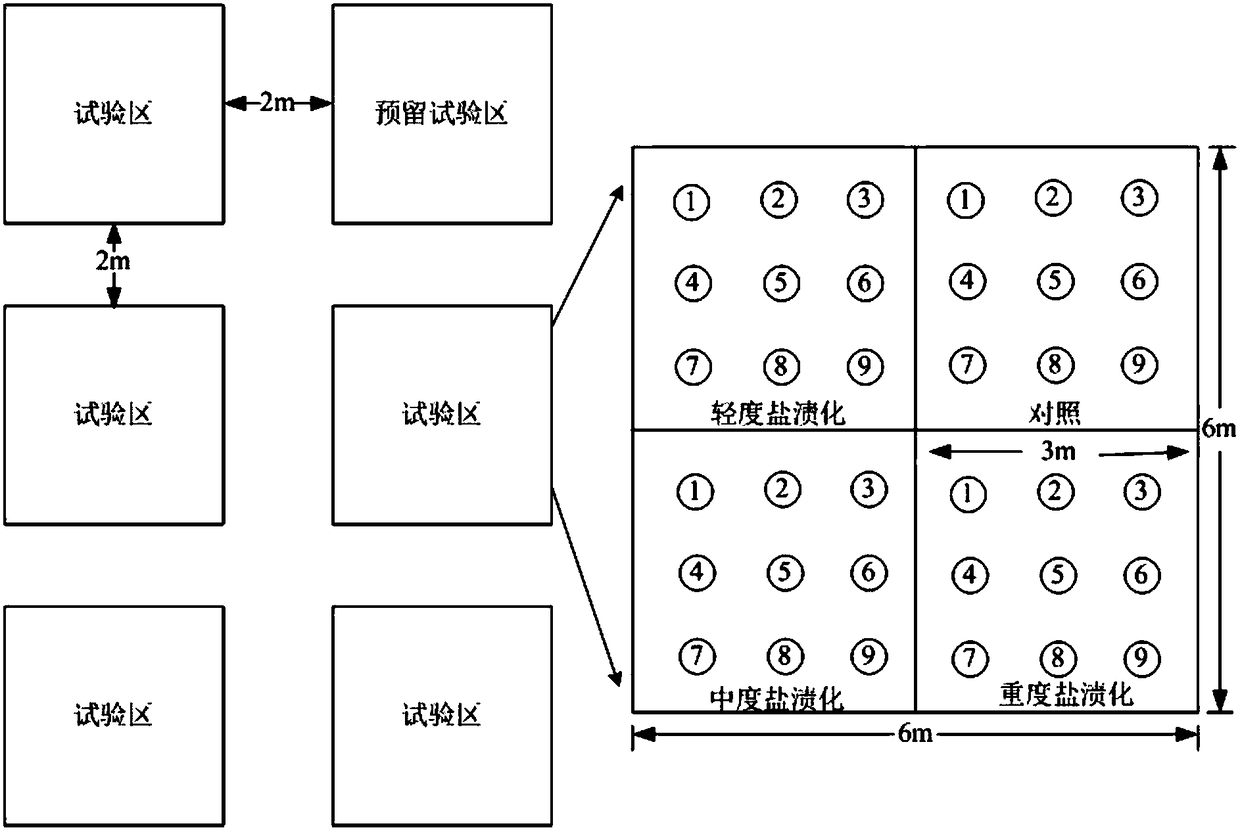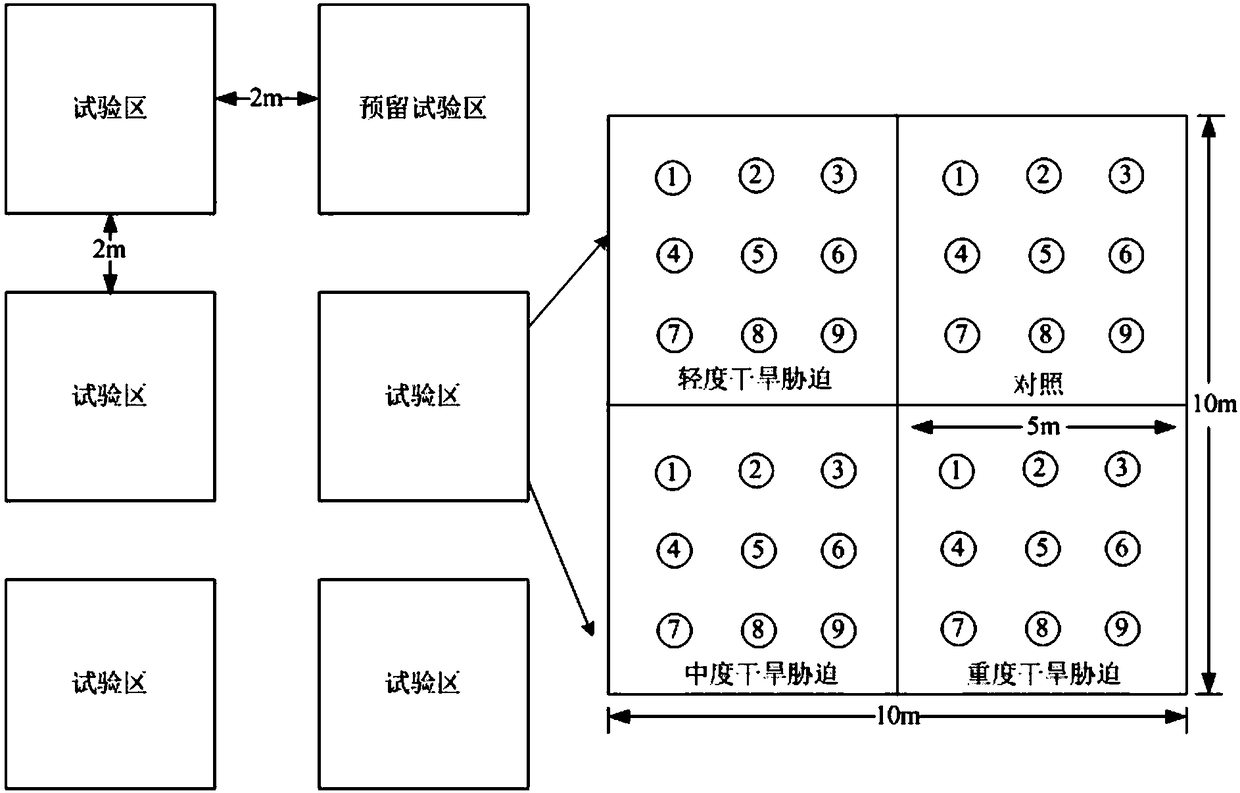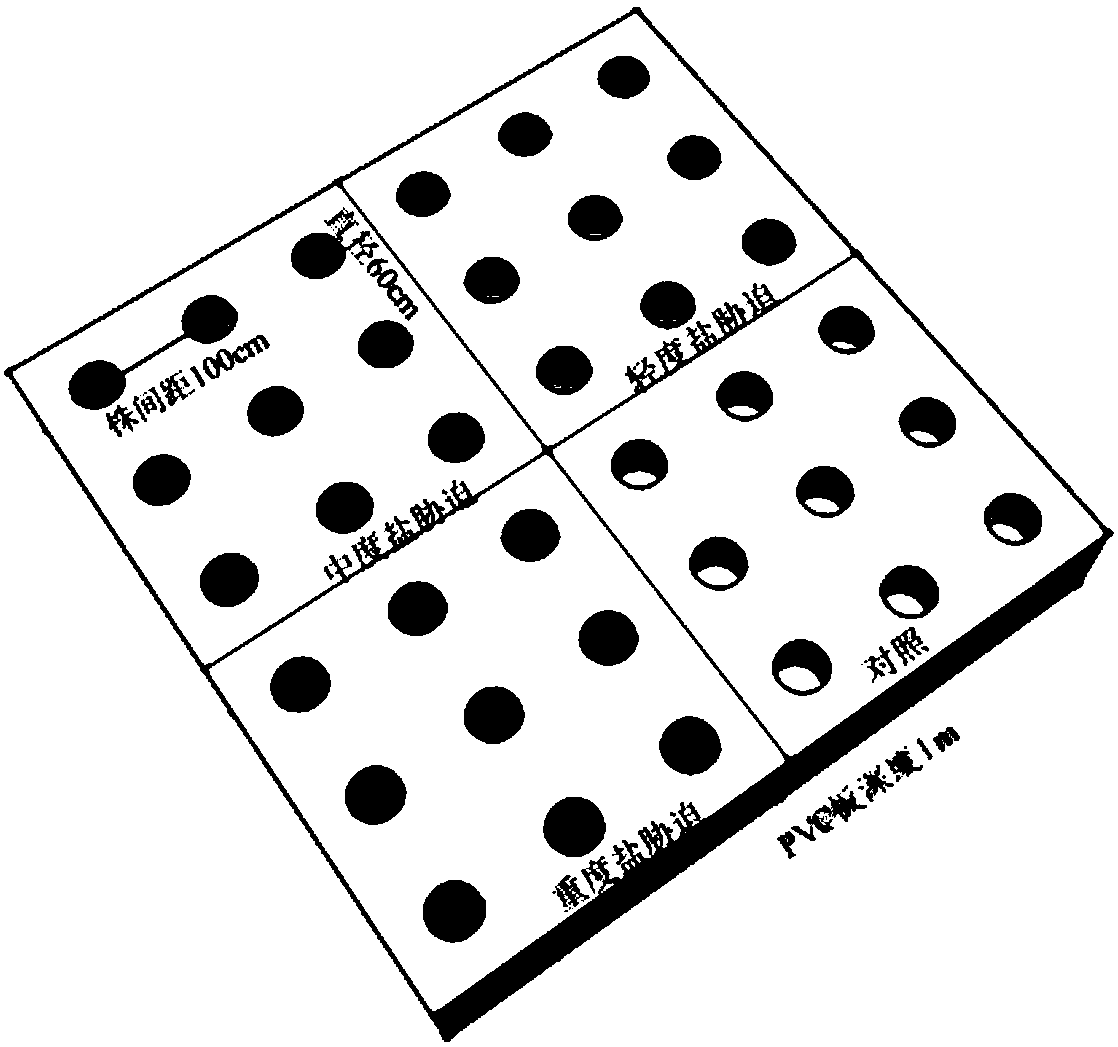Field herbaceous plant environment control test method
A herbaceous plant and control experiment technology, which is applied in the field of plant physiological and ecological research, can solve the problems of death, missing, and the inability to further explain the changes of plant mechanisms, so as to avoid cross-contamination and ensure accuracy.
- Summary
- Abstract
- Description
- Claims
- Application Information
AI Technical Summary
Problems solved by technology
Method used
Image
Examples
Embodiment 1
[0035] (1) Selection of sample plots for planting: in the desert areas where the native distribution of Huachai is selected, the area with flat terrain and little difference in soil background value is selected (24×14=336m 2 ), as a salt gradient test site;
[0036] Three gradients (mild salinization, moderate salinization, and severe salinization, set according to Table 1) were adopted. Select 6 plots of 6m×6m (Huahuachai is a perennial herb), with a buffer zone of at least 2m between each plot, one of which is a reserved test area, and each of the other 5 plots It is further divided into 4 plots, namely "control area", "mild salinization area", "moderate salinization area" and "severe salinization area", that is, there are 20 plots in total. Partitions (depth 1m) are placed around the plot to block the lateral exchange of salt and water, and to prevent the generation of cloned plants from affecting the experimental results. The sample setting is as follows: figure 1 , im...
Embodiment 2
[0050] (1) Selection of sample plots for planting: In desert areas where camel thorns are originally distributed, select areas with flat terrain and little difference in soil background values (34*22=748m 2 ), as the water gradient test site; for the isosmotic potential test corresponding to the salt gradient (recorded as PEG-light, PEG-medium, PEG-heavy), the reagent is PEG solution, and six 10m×10m (camel thorns are selected as semi-shrub), the other methods are the same as the salt gradient group, and the sample setting is as follows figure 2 , Figure 4 , Figure 6 .
[0051] (2) the plant selection of planting: dry environment plant selects camel thorn, selects robust 2-3 year old seedling stock, seedling height 5-7cm, root length 20-30cm, plant spacing 1.5m, pit diameter 60cm, depth of pit 70cm, will Xerophytes were planted in the pit, and the seedlings were backfilled with soil to a distance of 10 cm from the pit mouth.
[0052] (3) In the first ten days of April...
PUM
| Property | Measurement | Unit |
|---|---|---|
| Depth | aaaaa | aaaaa |
Abstract
Description
Claims
Application Information
 Login to View More
Login to View More - R&D Engineer
- R&D Manager
- IP Professional
- Industry Leading Data Capabilities
- Powerful AI technology
- Patent DNA Extraction
Browse by: Latest US Patents, China's latest patents, Technical Efficacy Thesaurus, Application Domain, Technology Topic, Popular Technical Reports.
© 2024 PatSnap. All rights reserved.Legal|Privacy policy|Modern Slavery Act Transparency Statement|Sitemap|About US| Contact US: help@patsnap.com










